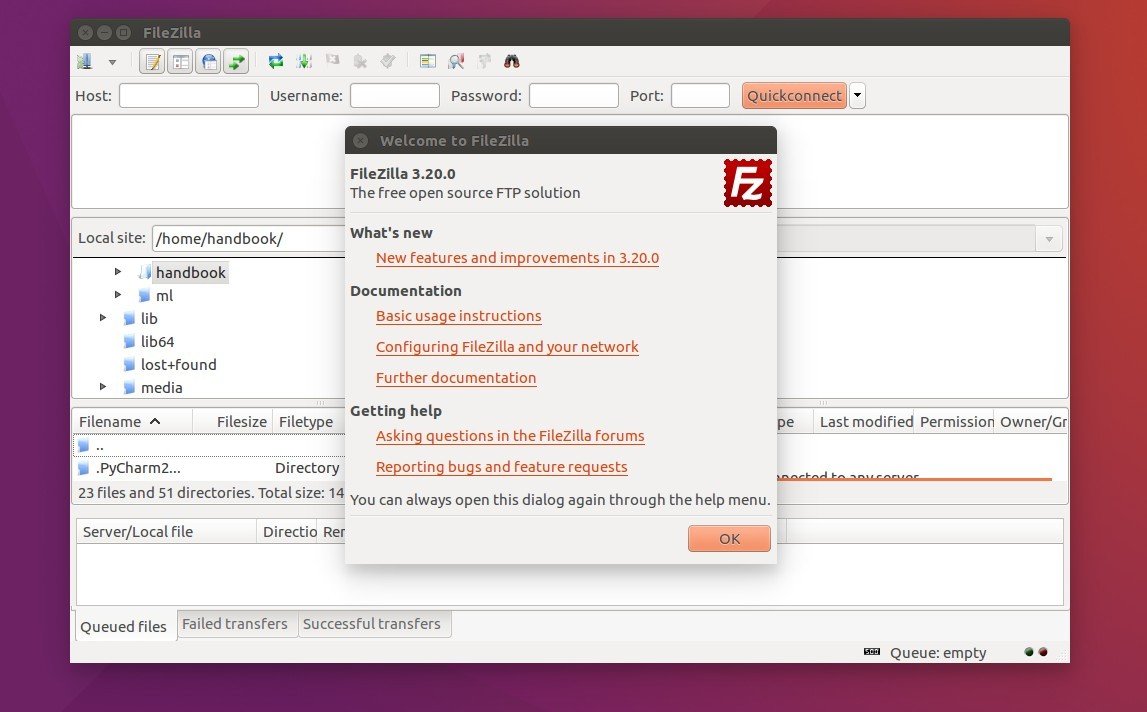

Seeking a better Dedicated Server solution? In the market for Private Cloud or Colocation services? Check out Hivelocity’s extensive list of products for great deals and offers. Popular tags within this category include: Linux, Windows, Apache, CentOS, Debian, Fedora, RedHat, and more.ĭon’t see what you’re looking for? Use the search bar at the top to search our entire Knowledge Base. How to Check if Your Linux Server is Under DDoS Attack.How to Check the Apache Version on a Linux Dedicated cPanel Server.Interested in more articles about Operating Systems ? Navigate to our Categories page using the bar on the left or check out these popular articles: Looking for more information on Ubuntu ? Search our Knowledge Base ! Lastly, you’ll need to restart the ProFTPD service with the following command:.After making your changes, save the configuration file with the command Ctrl + o, hit Enter, and then Ctrl + x.In order to restrict users to their home directories, uncomment (remove the # sign from) the line that says Default root.Within the configuration file, change the server name replacing it with the actual hostname of your server.Once the installation has finished, you can configure the ProFTPD service by editing the nf file located at /etc/proftpd/nf with your favorite editor.The installation and configuration process may take a few minutes.On the ProFTPD configuration screen, select the installation as Standalone then press TAB to move your cursor to the OK button and hit Enter to confirm.Now that your system is up-to-date, you can install ProFTPD FTP services using the command:.Use the following command to install all the latest packages: Next, you’ll want to make sure your operating system is up-to-date.First, log in to your Ubuntu server as the root user using your favorite SSH client.To install ProFTPD on your Ubuntu 14.04 LTS server, just follow these steps:


 0 kommentar(er)
0 kommentar(er)
